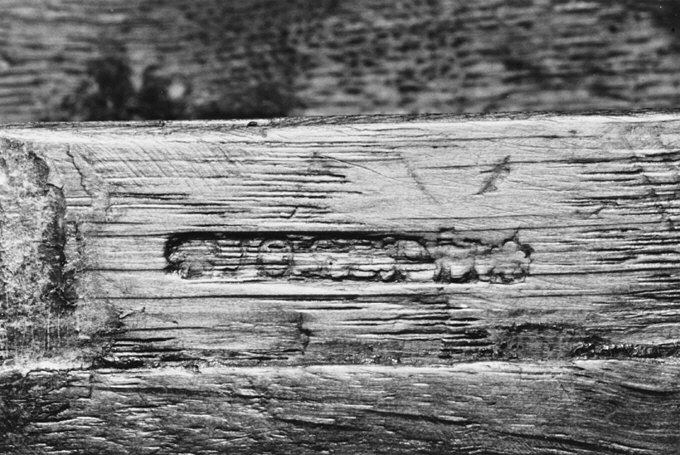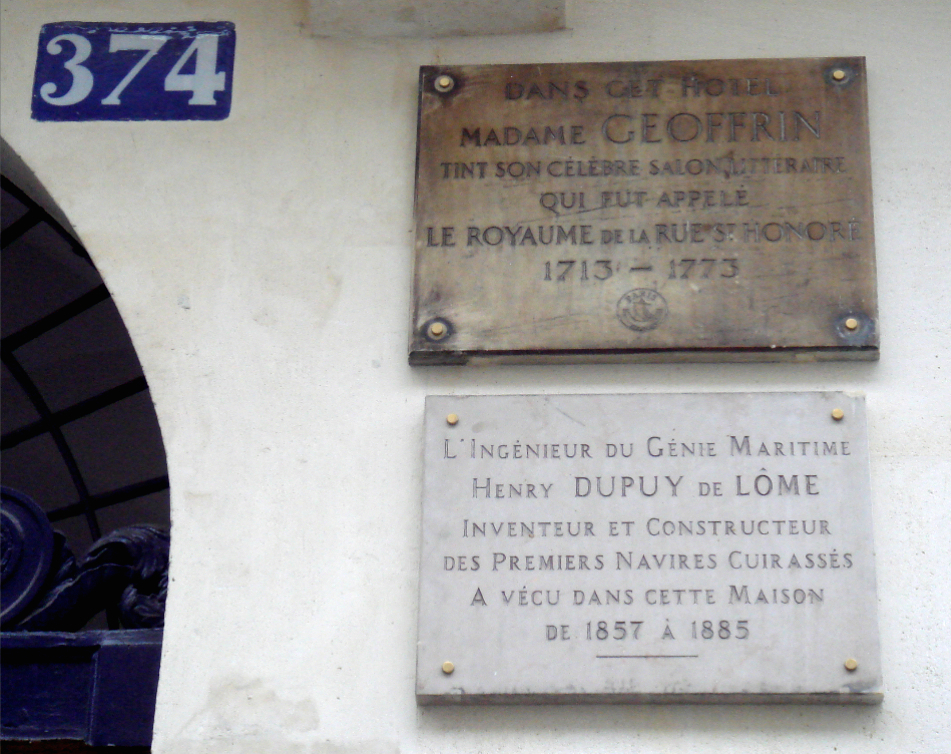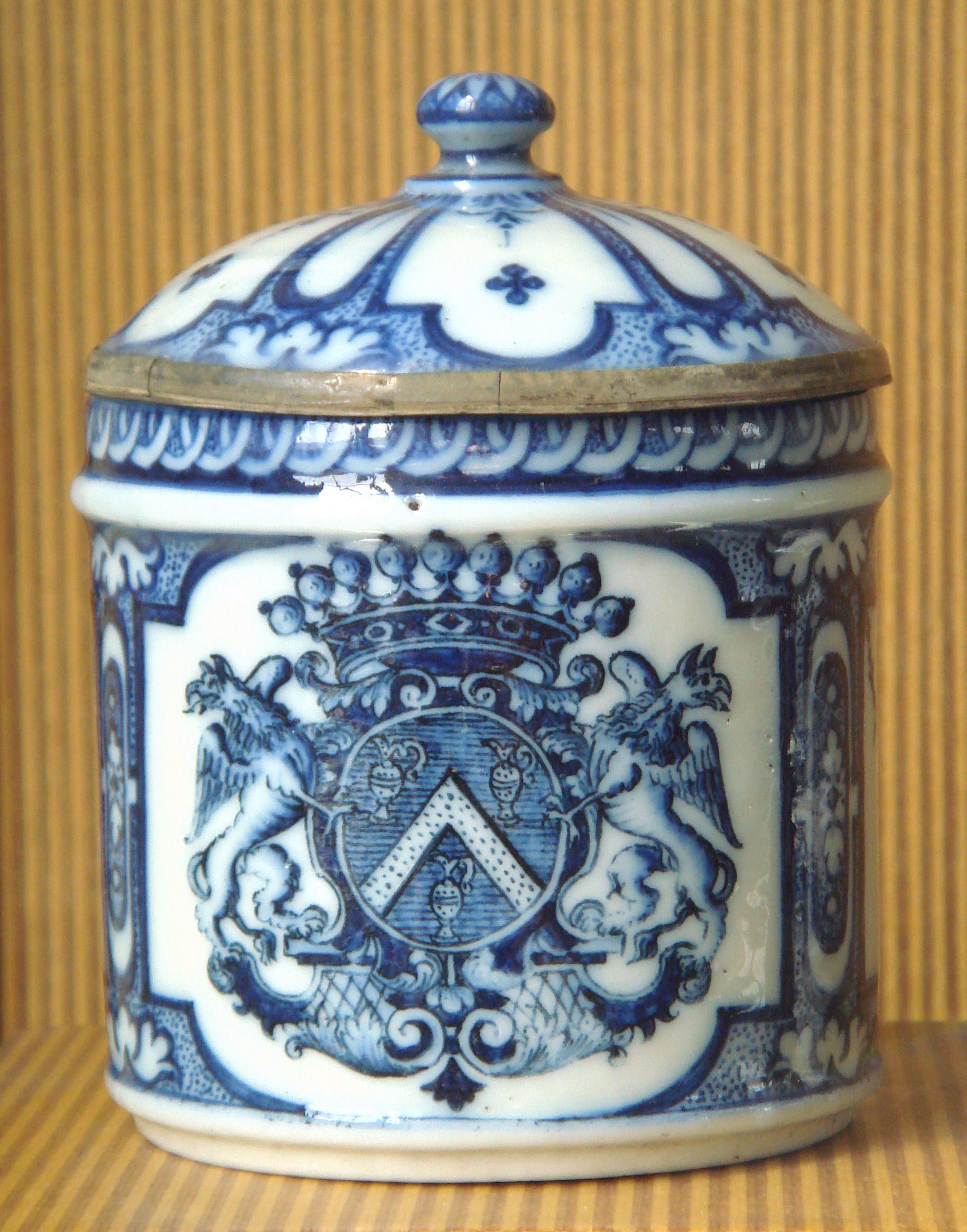|
Marchand-mercier
A ''marchand-mercier'' is a French language, French term for a type of entrepreneur working outside the guild system of craftsmen but carefully constrained by the regulations of a ''corporation'' under rules codified in 1613. The reduplicative term literally means a merchant of merchandise, but in the 18th century took the connotation of a merchant of ''Objet d'art, objets d'art''. Earliest references to this ''Corps de la Ville de Paris'' can be found at the close of the 16th century, but in the 18th century marchands-merciers were shopkeepers but they also played an important role in the decoration of Paris homes. In fact, they served as general contractors, designing and commissioning pieces of the most fashionable furniture, and often, in addition, worked outside of their shops as interior decorators, responsible for many aspects of a room's decor. In Paris, the guild system, in place since the late Middle Ages, prohibited craftsmen from working with any material with which the ... [...More Info...] [...Related Items...] OR: [Wikipedia] [Google] [Baidu] |
Edme-François Gersaint
EdmĂŠ-François Gersaint (1694â1750) was a Parisian ''marchand-mercier'' (merchant) who specialised in the sale of works of art and luxury goods and who is noted for revolutionising the art market by preparing, for the first time, detailed catalogs with descriptions of the work and biographies of the artist. Life and career EdmĂŠ-François Gersaint (1694â1750) was a Parisian ''marchand-mercier'' who was a central figure in the development of the art market and the luxury trades during the era of the RĂŠgence and the rule of the rococo style. His shadowy figure has always been connected with his caring friendship with the dying Antoine Watteau, which resulted in the familiar shop sign painted in 1720, conserved at Charlottenburg Palace, Charlottenburg, a masterpiece that provided publicity for Watteau as much as for Gersaint himself, but he had to wait until 2002 for his first in-depth biography. For his whole career, Gersaint presided from his cramped boutique, hardly more th ... [...More Info...] [...Related Items...] OR: [Wikipedia] [Google] [Baidu] |
Joseph Baumhauer
Joseph Baumhauer (died 22 March 1772) was a prominent Parisian ''ĂŠbĂŠniste An ''ĂŠbĂŠniste'' () is a cabinet-maker, particularly one who works in ebony. The term is a loanword from French and translates to "ebonist". Etymology and ambiguities As opposed to ''ĂŠbĂŠniste'', the term ''menuisier'' denotes a woodcarver or ...'', one of several of German extraction. Having worked for some years as a journeyman for the German-born ''ĂŠbĂŠniste'' François Reizell, he was appointed ''ĂŠbĂŠniste privilegiĂŠ du Roi'' in 1767, enabling him to skirt certain requirements of the Paris guild under royal privilege as well as a stiff entrance fee. He used the stamp âŁJOSEPHâŁ, the name by which he was commonly known to his contemporaries, between fleurs-de-lis emblematic of his royal appointment. Such stamps, like the long-mysterious B.V.R.B., served to mask the identity of cabinetmakers to the clientele of '' marchands-merciers'', such as Lazare Duvaux, who owed the "ĂŠbĂŠniste Joseph" ... [...More Info...] [...Related Items...] OR: [Wikipedia] [Google] [Baidu] |
Lazare Duvaux
Lazare Duvaux (''c''.1703 â 24 November 1758) was a Parisian ''marchand-mercier'', among the most prominent designers and purveyors of furnishings, gilt-bronze-mounted European and Chinese porcelains, Vincennes porcelain and later Sèvres porcelain and all the small, refined luxuries that appealed to Mme de Pompadour, one of his most prominent clients, who entrusted the furnishing of her many châteaux to Duvaux. Another prominent client was Pierre Victor, Baron de Besenval de Brunstatt, who furnished his residence in Paris, the HĂ´tel de Besenval, with the help of Lazare Duvaux. Lazare Duvaux was retrieved from posthumous obscurity when his daybook covering the decade 1748-1758 was published in 1873; it remains a central document of the decorative arts ] The decorative arts are arts or crafts whose aim is the design and manufacture of objects that are both beautiful and functional. This includes most of the objects for the interiors of buildings, as well as interior design, b ... [...More Info...] [...Related Items...] OR: [Wikipedia] [Google] [Baidu] |
Thomas-Joachim HĂŠbert
Thomas-Joachim HĂŠbert (1687â1773) was a leading Parisian '' marchand-mercier'' supplying the court (''suivant le Cour'') of Louis XV of France. In the 1720s, HĂŠbert commissioned furniture from the workshops of AndrĂŠ-Charles Boulle. Among the ''ĂŠbĂŠnistes'' working to his commissions in later days was Bernard II van Risamburgh; about 1750, he supplied furniture by Bernard to the minister Jean-Baptiste de Machault d'Arnouville Jean-Baptiste de Machault, comte d'Arnouville, seigneur de Garge et de Gonesse (Paris, 13 December 1701 â Paris, 12 July 1794), was a French statesman, son of Louis Charles Machault d'Arnouville and lieutenant of police. In 1721, he was counse ..., some of which can be traced in modern collections.See sale catalogueChristie's New York, 2 November 2000, lot 231, a pair of lacquer ''encoignures''/ref> See also * Lazare Duvaux Notes French furniture designers 1687 births 1773 deaths French merchants {{France-artist-stub ... [...More Info...] [...Related Items...] OR: [Wikipedia] [Google] [Baidu] |
Rue Saint-HonorĂŠ
The Rue Saint-HonorĂŠ () is a street in the 1st arrondissement of Paris, France. It is named after the collegial , situated in ancient times within the cloisters of Saint-HonorĂŠ. The street, on which are located a number of museums and upscale boutiques, is near the Tuileries Gardens and the Saint-HonorĂŠ market. Like many streets in the heart of Paris, the Rue Saint-HonorĂŠ, as it is now known, was laid out as early as the Middle Ages or before. The street, at one time, continued beyond the former city walls into what was the ''faubourg'' (from Latin ''foris burgem'', an area "outside the city"). This continuation was eventually named the Rue du Faubourg Saint-HonorĂŠ. History The Rue Saint-HonorĂŠ has been given the following names in its long history: *The section between the Rue de la Lingerie and the Rue de la Tonnellerie was named the Rue de la Chausseterie from 1300 to the 17th century. *The section between the now extinct Rue Tirechappe and the Rue de l'Arbre Sec was ... [...More Info...] [...Related Items...] OR: [Wikipedia] [Google] [Baidu] |
French Porcelain
French porcelain has a history spanning a period from the 17th century to the present. The French were heavily involved in the early European efforts to discover the secrets of making the hard-paste porcelain known from Chinese and Japanese export porcelain. They succeeded in developing soft-paste porcelain, but Meissen porcelain was the first to make true hard-paste, around 1710, and the French took over 50 years to catch up with Meissen and the other German factories. But by the 1760s, kaolin had been discovered near Limoges, and the relocated royal-owned Sèvres factory took the lead in European porcelain design as rococo turned into what is broadly known as the Louis XVI style and then the Empire style. French styles were soon being imitated in porcelain in Germany, England, and as far afield as Russia. They were also imitated in the cheaper French faience, and this and other materials elsewhere. This dominance lasted until at least 1830. Before the French Revolution in ... [...More Info...] [...Related Items...] OR: [Wikipedia] [Google] [Baidu] |
Louise Julie De Mailly
Louise Julie de Mailly-Nesle, comtesse de Mailly (; 1710â1751) was the eldest of the five ''de Nesle'' sisters, four of whom were mistresses of King Louis XV of France. She was first the mistress of the Marquis de Puysieux and then of Louis XV from 1732 until 1742, and his official mistress from 1738 until 1742. Early life, family and marriage Louise Julie was born the eldest daughter of Louis de Mailly, marquis de Nesle et de Mailly, Prince d'Orange (1689â1767), and Armande FĂŠlice de La Porte Mazarin (1691â1729). Her parents had been married in 1709. Her mother was the daughter of 'Paul Jules de La Porte, duc Mazarin et de La Meilleraye (1666â1731), the son of the famous adventuress, Hortense Mancini, the niece of Cardinal Mazarin. Her mother was a lady-in-waiting in service to the queen from 1725, and her father reportedly "wasted his substance on actresses and the capacious requirements of Court life".Latour, Louis Therese, Princesses Ladies And Salonnieres of Th ... [...More Info...] [...Related Items...] OR: [Wikipedia] [Google] [Baidu] |
Vernis Martin
In French interior design, ''vernis Martin'' is a type (or a number of types) of japanning or imitation lacquer named after the 18th century French Martin brothers: Guillaume (died 1749), Etienne-Simon, Robert and Julien. They ran a leading factory from between about 1730 and 1770, and were ''vernisseurs du roi'' ("varnishers to the king"). But they did not invent the process, nor were they the only producers, nor does the term cover a single formula or technique.Osborne, 811 It imitated Chinese lacquer and European subjects, and was applied to a wide variety of items, from furniture to coaches. It is said to have been made by heating oil and copal and then adding Venetian turpentine. Oriental lacquer had speedily acquired high favour in France, and many attempts were made to imitate it. Some of these attempts were passably successful, and it is likely that many of the examples in the possession of Louis XIV at his death were of European manufacture. Chinese lacquer was, howev ... [...More Info...] [...Related Items...] OR: [Wikipedia] [Google] [Baidu] |
Louis XV
Louis XV (15 February 1710 â 10 May 1774), known as Louis the Beloved (), was King of France from 1 September 1715 until his death in 1774. He succeeded his great-grandfather Louis XIV at the age of five. Until he reached maturity (then defined as his 13th birthday) in 1723, the kingdom was ruled by his grand-uncle Philippe II, Duke of OrlĂŠans, as RĂŠgence, Regent of France. AndrĂŠ-Hercule de Fleury, Cardinal Fleury was chief minister from 1726 until his death in 1743, at which time the king took sole control of the kingdom. His reign of almost 59 years (from 1715 to 1774) was the second longest in the history of France, exceeded only by his predecessor, Louis XIV, who had ruled for 72 years (from 1643 to 1715). In 1748, Louis returned the Austrian Netherlands, won at the Battle of Fontenoy of 1745. He ceded New France in North America to Great Britain and Spain at the conclusion of the disastrous Seven Years' War in 1763. He incorporated the territories of the Duchy of Lorr ... [...More Info...] [...Related Items...] OR: [Wikipedia] [Google] [Baidu] |
Bernard II Vanrisamberg
Bernard (''Bernhard'') is a French and West Germanic masculine given name. It has West Germanic origin and is also a surname. The name is attested from at least the 9th century. West Germanic ''Bernhard'' is composed from the two elements ''bern'' "bear" and ''hard'' "brave, hardy". Its native Old English cognate was ''Beornheard'', which was replaced or merged with the French form ''Bernard'' that was brought to England after the Norman Conquest. The name ''Bernhard'' was notably popular among Old Frisian speakers. Its wider use was popularized due to Saint Bernhard of Clairvaux (canonized in 1174). In Ireland, the name was an anglicized form of Brian. Geographical distribution Bernard is the second most common surname in France. As of 2014, 42.2% of all known bearers of the surname ''Bernard'' were residents of France (frequency 1:392), 12.5% of the United States (1:7,203), 7.0% of Haiti (1:382), 6.6% of Tanzania (1:1,961), 4.8% of Canada (1:1,896), 3.6% of Nigeria (1:12,221) ... [...More Info...] [...Related Items...] OR: [Wikipedia] [Google] [Baidu] |
ĂŠbĂŠniste
An ''ĂŠbĂŠniste'' () is a cabinet-maker, particularly one who works in ebony. The term is a loanword from French and translates to "ebonist". Etymology and ambiguities As opposed to ''ĂŠbĂŠniste'', the term ''menuisier'' denotes a woodcarver or chairmaker in French. The English equivalent for ''ĂŠbĂŠniste'', "ebonist", is not commonly used. Originally, an ''ĂŠbĂŠniste'' was one who worked with ebony, a favoured luxury wood for mid-17th century Parisian cabinets, originating in imitation of elite furniture being made in Antwerp. The word is 17th-century in origin. Early Parisian ''ĂŠbĂŠnistes'' often came from the Low Countries themselves; an outstanding example is Pierre Gole, who worked at the '' Gobelins manufactory'' making cabinets and table tops veneered with marquetry, the traditional enrichment of ''ĂŠbĂŠnisterie'', or "cabinet-work". History ''ĂbĂŠnistes'' make case furniture, either veneered or painted. Under Parisian guild regulations, painted varnishes, generica ... [...More Info...] [...Related Items...] OR: [Wikipedia] [Google] [Baidu] |





